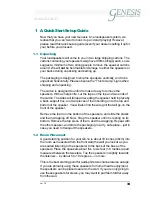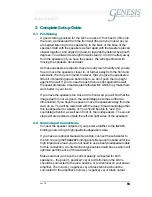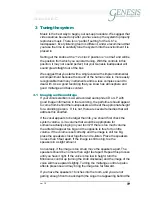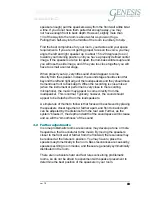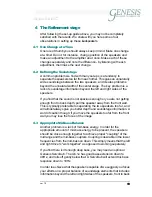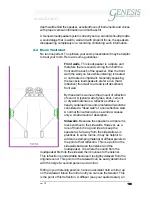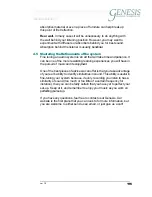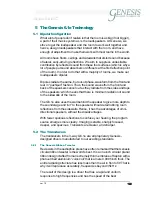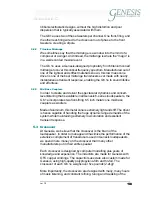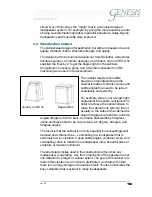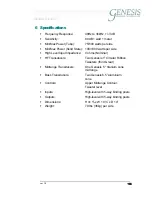
ver 1.0
5
5
absolute fidelity
2 Complete Set-up Guide
2.1 Positioning
A good starting position for the G6.1e is about 18 inches (0.45m) into
the room, as measured from the front wall (the wall you look at as you
are seated listening to the speakers), to the back of the base of the
speaker. Start with the speakers six feet apart with the tweeters placed
closest together, and angled in (toed-in) towards the listener by about 5
degrees. You will want to sit eight to twelve feet (2.4 to 4.0 metres) away
from the speakers (if you have the space). We will experiment with
moving the speakers around later.
As these speakers are dipolar, they are really room-friendly and you are
free to move the speakers closer to, or further away from the front and
side walls. We do recommend, however, that you give the speakers a
little bit of breathing space behind them, so don’t push them up tight
against the wall. If you do need to push then up tight against the wall,
the speakers feature a rear tweeter defeat switch which may make them
work better in your room.
If you have the speakers too close to the front wall, you will find that the
image depth is not as good - the soundstage becomes a little two-
dimensional. If you have the space to move the speakers away from the
wall, do so. You will be rewarded with the deep, broad soundstage that
this loudspeaker is capable of. You should be able to “see” the
soundstage behind, as well as in front of, the loudspeakers. The sound
stage will also extend outside the left and right sides of the speakers.
2.2 Source Input Connections
Connect the speaker outputs of your power amplifier to the
I
NPUTS
binding posts using a high-quality loudspeaker cable.
If you have an optional Genesis ServoSub, connect the subwoofer to
the G6.1e using the
T
HRUPUT
binding posts. Because the subwoofer is a
high impedance
load, you do not need to use a beefy loudspeaker cable
for this connection. An interconnect-type cable should be use which will
optimise performance of the subwoofer.
Make sure that you have the correct polarity connected for both
speakers – the plus(+), pove) or red terminal on the G6.1e
should be connected to the plus, positive, or red terminal on your power
amplifier. The minus(-), negative(-ve) or black terminal should be
connected to the amplifier’s minus(-), negative(-ve) or black output.



